Top 10 Workflow Approval Software (Paid & Free) 2025 Review
If you are stuck choosing workflow approval software, you’re at the right place. This review ranks ten paid and free tools and gives you a clear buying framework.
We cover core features, user reviews, pros and cons, approval logic depth, along with actionable choosing advice.
What’s the Best Workflow Approval Software in 2025?
1. Productive – Best For All-in-One Project Delivery And Approvals
Productive is an all-in-one platform that runs projects, budgets, time, expenses, time off, and approvals in one place, so teams replace patchwork tools with a single workflow software.
Core Approval Features
- Time approval allows budget owners to review time entries before they’re visible to clients or included in reports. You can enable this in Settings > Time Tracking and set it as default for new budgets.
- Expense and invoice approval lets budget owners receive notifications and approve, reject, or edit expense submissions from team members working on budgets and deals.
- Time-Off approval enables managers to approve or reject absence requests before they’re confirmed in the Resource Planner. Approvers can review attachments and handle scheduling conflicts during the process.
- Each approval system ensures entries only become official after review by the responsible person, giving you better oversight and control.
These approval types sit inside your approval workflow and your budgets, so reviewers act where work and costs are tracked. That helps reduce back and forth, shortens lead time to approve, and gives teams a consistent path from request to sign off.
Try Productive’s workflow approval solution
Time Approvals: Protect billable accuracy before time reaches clients and reports
Time approval allows budget owners to review time entries before they’re visible to clients or included in reports. You can enable easy time tracking and set it as default for new budgets.
This meets common pains like granular time entry review and cross‑team visibility, because approvals happen where budgets live. The result is cleaner billing, fewer corrections, and a clearer approval workflow for time.
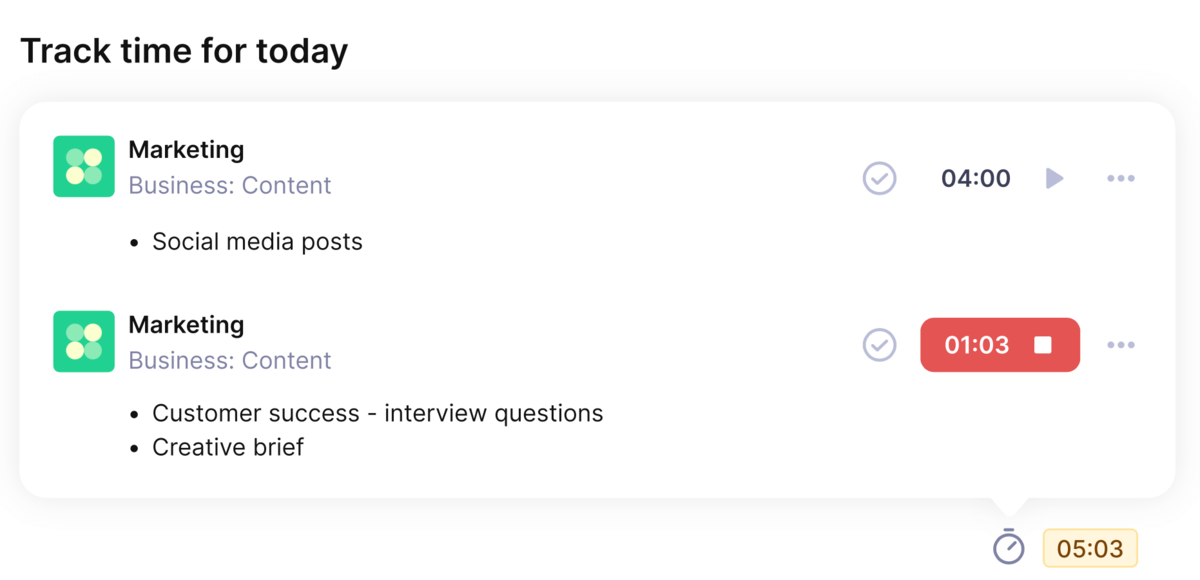
Track time directly and approve time entries later.
Expense Approvals: Control spend with quick approve, reject, or edit
Expense and approval lets budget owners receive notifications and approve, reject, or edit expense submissions from team members working on budgets and deals.
This replaces manual chasing of receipts and ad hoc sign offs with a simple, trackable review in the same place you manage projects and budgets. You keep spend visible and decisions recorded without extra tools.
Head over to purchase orders for more feature context.

Send purchase orders or other expense approvals directly from Productive.
Time Off Approvals: Keep schedules accurate before absences go live
Time Off Management enables managers to approve or reject absence requests before they’re confirmed in the Resource Planner.
Approvers can review attachments and handle scheduling conflicts during the process.
This addresses the common problem of fragmented absence workflows and unclear ownership by making approvals part of the same system that plans resources. Teams see who is out, avoid clashes, and confirm time off with a clear record.

Manage time-off approvals in the same place as workloads.
Workflow Automations: Keep approvals moving and reduce manual follow up
Productive sends notifications to the designated approver when someone submits time, expenses, or time off, so reviews happen from an approval inbox without chasing.
You can approve with one click, request changes, or edit entries directly, which shortens handoffs.
Using notifications as triggers keeps entries flowing to the next step and makes the review layer consistent across budgets and teams. This helps replace ad hoc pings with a reliable rhythm for approvals.
If you need more feature context, head over to Automations.

Use Productive’s no-code automations to reduce repetitive manual work.
Pricing
- Plans start with the Essential plan at $9 per user per month, which includes essential features such as budgeting, project & task management, docs, time tracking, expense management, reporting, and time off management.
- The Professional plan includes custom fields, recurring budgets, advanced reports, billable time approvals, and many more for $24 per user per month.
- The Ultimate plan has everything that the Essential plan and Professional plan offer, along with the HubSpot integration, advanced forecasting, advanced custom fields, overhead calculations, and more for $32 per user per month.
Productive offers a 14-day free trial, so you can see what it can do for your project’s financial health.
Manage Work and Approvals in Productive
Replace a patchwork of tools with a single platform for delivery, budgeting, finance and approvals.
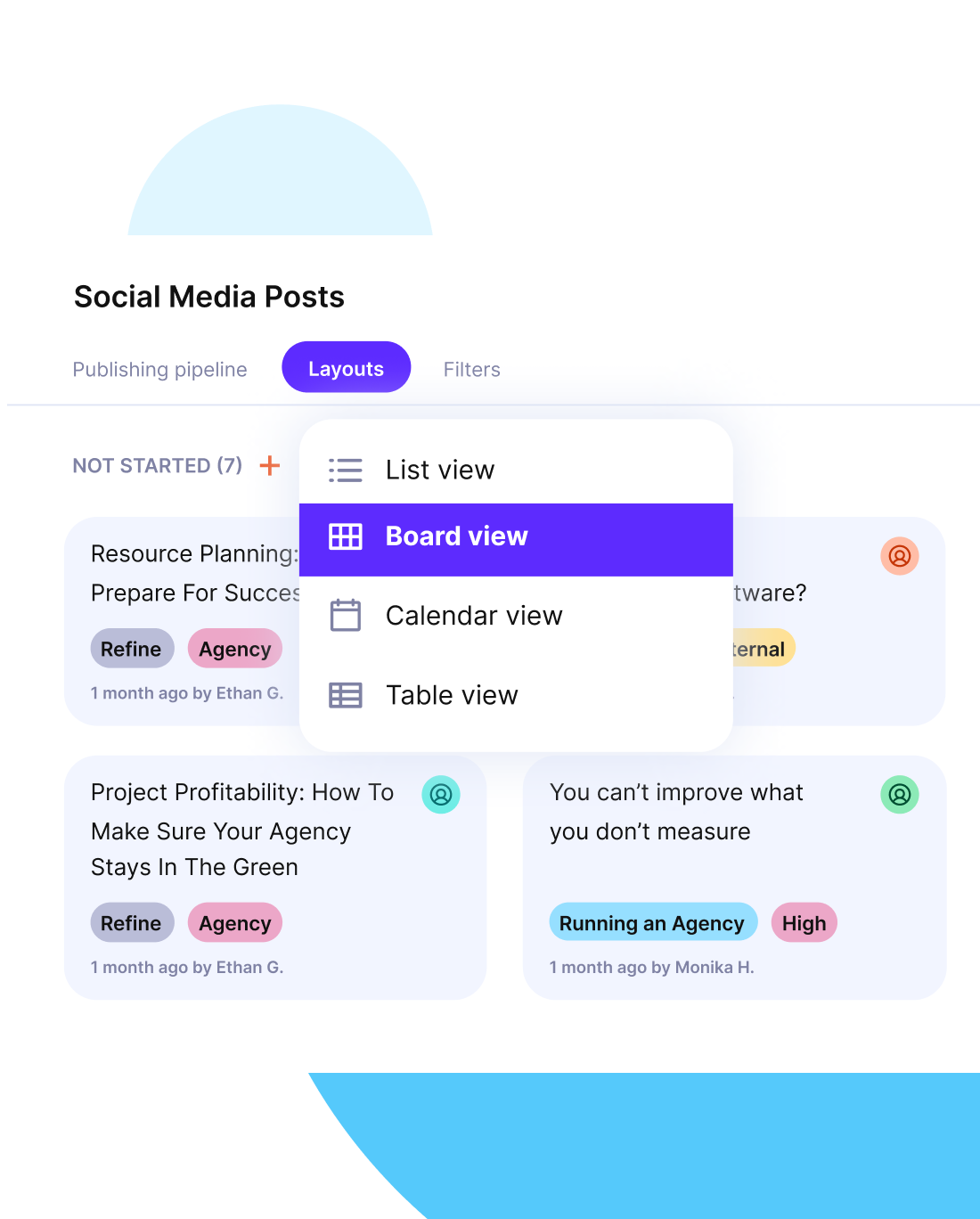
2. Wrike – Best For Approval Automations At Scale
Wrike is a work management platform with configurable approval automations that suit large teams. Wrike is project management automation software built for hhigh-volume routing of organizational processes in large teams.
Core Features:
- Request forms and intake rules
- Conditional logic with parallel steps
- SLA timers and auto reminders
- Proofing and version control
- Custom statuses and dashboards
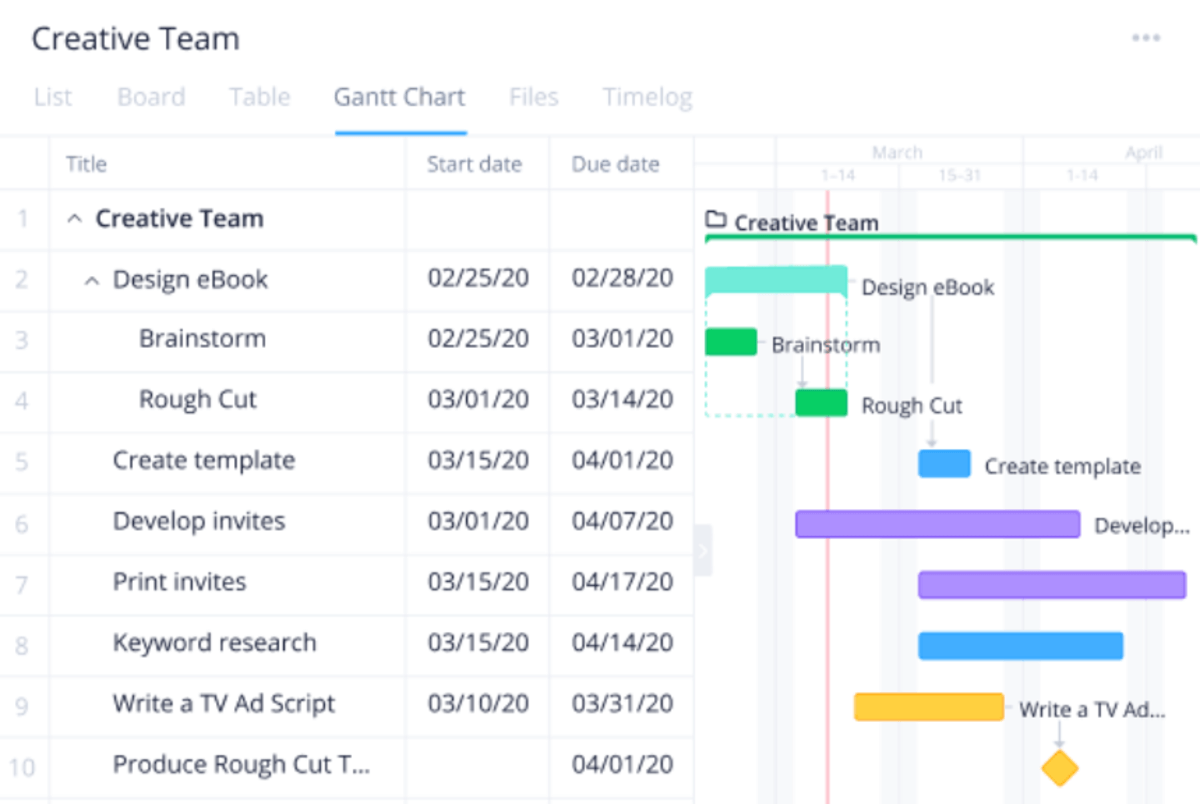
SOurce: wrike
User Review:
I still found the system hard to navigate and especially hard to find previous items in the pipeline especially when something was marked as complete.
I think the layout wasn’t intuitive or smooth to navigate.
Source: G2 Review
Final Verdict:
Users on G2 say Wrike handles general project planning and ships frequent features via Wrike Labs, but navigation feels unintuitive and completed items are hard to find, which can make tracking approval status harder.
For product-oriented approvals it often feels “hacked,” and when integrations do not match GitHub or Jira workflows, Wrike becomes another step instead of a seamless sign off path, with some also noting that reducing seats or canceling is difficult.
If you’re considering Wrike, you might want to look at our Wrike vs ClickUp comparison.
3. Adobe Workfront – Best For Enterprise Creative Audit Trails
Adobe Workfront centralizes enterprise creative requests and approvals with strong audit, security, and compliance controls.
Adobe Workfront helps enterprise creative teams run an approval workflow that supports strict business rules, controls, and clear accountability.
As workflow software for creative operations, it standardizes requests, proofs, and handoffs so sign-offs stand up to an audit trail.
Core Features:
- Proofing with version control
- Request intake and routing rules
- Stage gates and custom statuses within a document approval workflow
- Reports and exportable history

SOurce: adobe workfront
User Review:
It’s extremely laggy and buggy for larger teams and the overall usability is super poor. It seems we are constantly dealing with some sort of Workfront issue. We were also told we could do X Y Z with this product, yet there never any answers on how we can make those solutions possible for our team. Support is slow and mostly unhelpful. I’ve spent my entire career working in project management systems and Workfront is in my bottom 5 every time, especially considering the pricing.
Source: G2 Review
Final Verdict
Users on G2 mention that Workfront can route requests from multiple business units into one queue and auto update status when work is marked done, which helps centralize approvals.
They also report lag, a steep learning curve, and complex navigation with many windows, which can slow multi step approvals and make it harder for approvers to act quickly, with support and promised solutions not always matching expectations.
4. ClickUp – Best For Cross Team Approval Visibility
ClickUp brings task, doc, and project approvals into one workspace with clear visibility across teams.
ClickUp supports approval workflows inside tasks and docs so everyone can see status in one place. Approvers act where work lives, which reduces delays. It fits teams that want workflow management and approvals together.
Core Features:
- Approval status fields
- Automations for reminders and handoffs
- Reusable approval request templates
- Views and dashboards

SOurce: clickup
User Review:
It’s not as friendly as expectd, the channels joining requires an invitation or a specific link, also Clickup needs to be more friendly on managing tasks sub tasks, and other data, the web version is slow, needs to improve their performance and uptime
Source: G2 Review
Final Verdict:
Users on G2 mention that ClickUp strikes a helpful balance between prescriptive patterns and ease, so teams adopt it and approvals can live where work happens.
They also report bugs, slow web performance, saving glitches, and friction joining spaces, which can slow task and subtask updates and make approval status less reliable in real time.
5. Jotform Approvals – Best Free Form To Approval Routing
Jotform Approvals turns form submissions into simple multi step approval flows, even on the free plan.
Jotform connects forms to an approval workflow within minutes. It suits teams that want free tools for simple requests and quick mobile sign off. This software supports basic escalations and email notifications.
Core Features:
- Conditional branches
- Mobile approvals and email actions
- Approval request templates
- Document approval workflow

SOurce: jotform approvals
User Review:
I found the pricing structure of Jotform to be quite unclear and somewhat misleading. We initially started with a free trial, but when distributing the survey and needing to handle more responses, we had to upgrade to a paid plan. The advertised pricing per month was only applicable if we paid for an entire year upfront, which was not clearly communicated as the cost for a month-to-month payment was different.
Source: G2 Review
Final Verdict:
Users on G2 say Jotform’s intuitive builder makes it easy to create and share forms, collect responses, and download data, which helps teams stand up simple intake for approvals fast.
They also flag unclear pricing and trial-to-paid thresholds, noting that the advertised monthly rate often applies only with annual payment, which can surprise teams.
6. Process Street – Best For No Code Approval Checklists
Process Street lets teams build checklist style processes with approvals and handoffs without code.
Process Street is a good choice for recurring operations where consistency matters. It supports approval workflows inside checklists so teams ship the same outcome every time.
Core Features:
- Stop tasks and required fields
- Conditional logic and dynamic assignments
- Handoffs and role assignments
- Run logs and approval requests

SOurce: process street
User Review:
It provides several features that allow you to create and manage processes, so you can keep a big library of processes well organized. Support has always been quick, even though responses are not always great.
Source: G2 Review
Final Verdict:
Users on G2 say Process Street helps teams organize repeatable checklists, so simple approval steps stay tidy and trackable.
They also report bugs and heavy performance that can slow long, logic-heavy approvals, with completed items sometimes not clearing, limited native integrations that push teams to Zapier, and value concerns for the price.
7. Jira – Best For Developer And IT Change Approvals
Jira supports structured approvals for software changes and IT service requests using custom workflows.
Jira is can be used as approval workflow software for engineering and IT teams that need a straightforward sign-off request process close to the work. Approvals sit on issues, so reviewers act without switching tools.
Core Features:
- Required approver field
- Workflow schemes and statuses of the approval process
- Automation rules and notifications: trigger handoffs, comments, or status changes when conditions are met.
- Issue history and audit trail

SOurce: jira
User Review:
The free version is giving us some basic features to use. Also the reports overview using free graphs are also good, giving us some basic insightss about the projects.
Source: G2 Review
Final Verdict:
Users on G2 mention that Jira’s boards, timelines, and cross-project visibility help teams track approval status and stay aligned, with the free version covering basics and simple reporting.
However, richer approval logic often relies on advanced automation or scripting, which can feel complex and carry a steep learning curve for non-technical approvers.
We talk more about Jira in our Jira vs Asana comparison.
8. DocuWare – Best For Document Centric Approvals
DocuWare focuses on document capture, routing, and approvals with strong records management.
DocuWare is workflow software for teams that live in invoices, contracts, and HR files. It turns incoming documents into a structured approval workflow with indexing, routing rules, and retention so audits are straightforward.
Core Features:
- Document capture and indexing
- Routing rules and role controls
- Audit trail and retention policies
- Integrations and export options
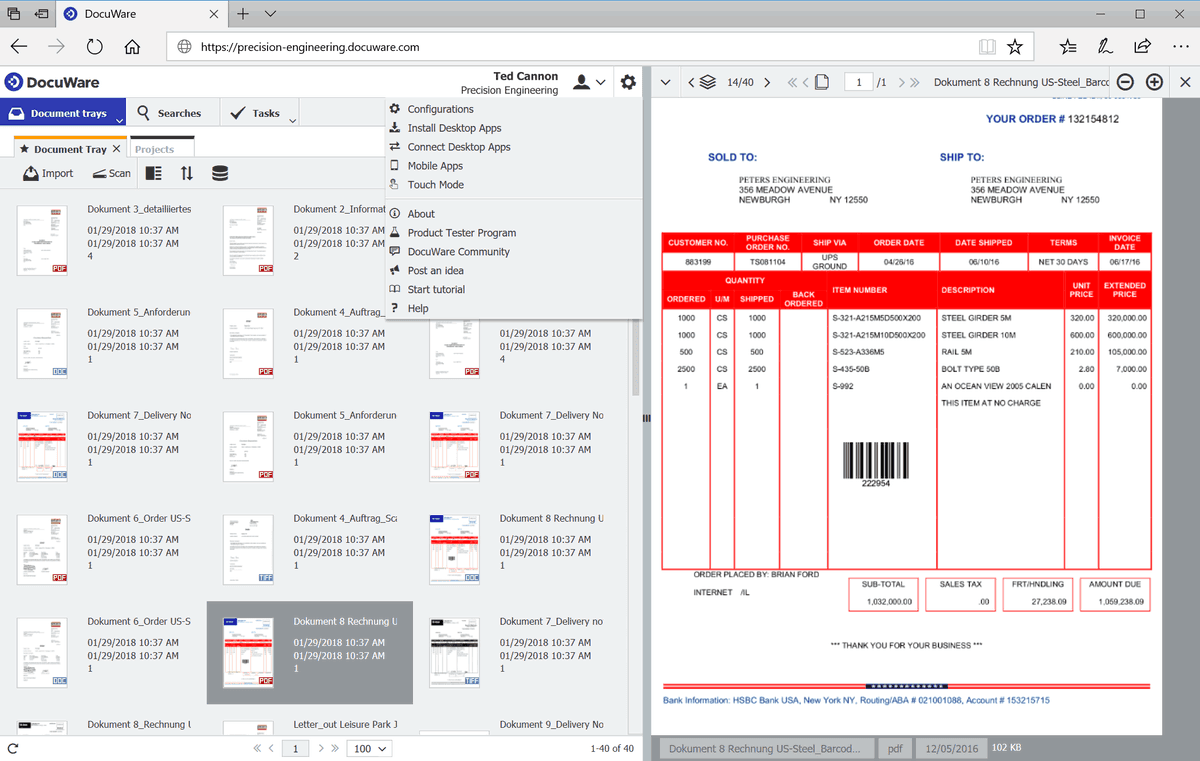
SOurce: docuware
User Review:
Docuware allows users to obtain and examine Document papers in a single, easy-to-use platform. The user interface is simple and easy to use. If there is a problem with file access, there is always another file online on the backup disk since Docuware rapidly synchronizes the two.
Source: G2 Review
Final Verdict:
According to G2 reviews, DocuWare’s intuitive workflow designer, stamping, and fast document search make document-centric approvals straightforward, with sync and backups helping teams access files reliably.
They also note limits for complex logic and the lack of parallel tasks, which can bottleneck multi-approver workflows, alongside higher cost and uneven support.
9. airSlate – Best For Intelligent Document Routing
airSlate combines document generation, bots, and approvals to route work across systems. airSlate is workflow software that routes documents across systems with bots and notifications.
As process automation software, it reduces handoffs by moving data between apps and alerting the next reviewer. It turns a document stream into an approval workflow that spans CRM, finance, and HR.
Core Features:
- Document bots and data mapping
- API hooks and integrations
- Role based access control
- Audit trail and exportable history
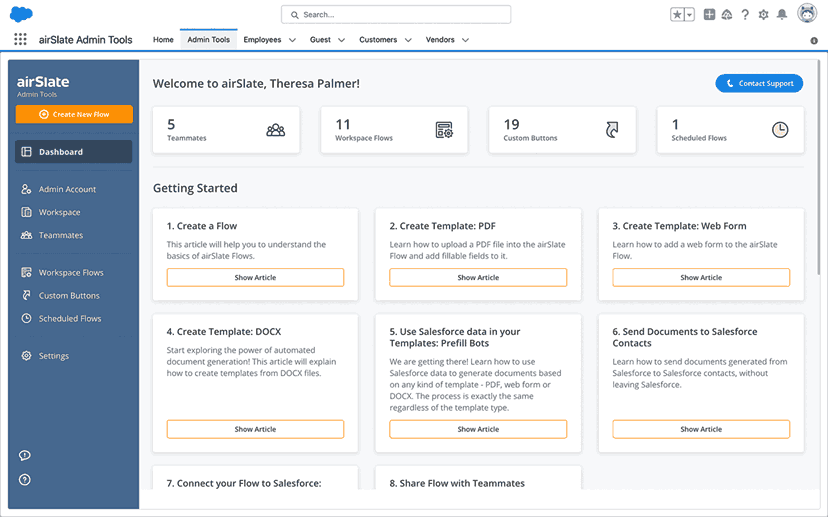
SOurce: airslate
User Review:
It isn’t very user-friendly on the back end, and if you need to have multiple forms in different combinations, you need to make different sets to be sent out. Then if one item needs to be changed or corrected, it needs to be done in each individual set. If you have hundreds of these sets it can take a lot of time to fix.
Source: G2 Review
Final Verdict:
airSlate’s bots help automate cross-system steps, triggering other software on document completion and pushing data into storage, and that setting up workflows and documents is straightforward.
Users also report routing pain points that affect approvals, like documents locking when closed, drafts overwriting, cumbersome maintenance of many form sets, slow escalation to higher support, no date-based handoffs to the next signer, and no MFA, which limits PII use.
10. Lark – Best Free Internal Approvals For Fast Moving Teams
Lark is a approval routing software that offers quick internal request and approval flows inside a chat first suite, with a free plan.
Lark is also a collaboration software with built-in approval requests for everyday requests. It supports simple approval workflows for travel, expenses, and office needs, so teams move fast. This software keeps requests visible in chat and on mobile, which shortens response time and reduces back and forth.
Core Features:
- Built in templates
- Mobile approvals and push notifications
- Chat actions to approvals
- Lightweight routing and records

SOurce: lark
User Review:
Occasional glitches or technical issues, a learning curve for some of the more advanced features, and limitations in terms of customization options for certain aspects of the platform and the user interface can be overwhelming at first due to the sheer number of features and options available.
Source: G2 Review
Final Verdict:
Users on G2 mention that Lark’s chat, calls, and task management in one place make quick internal requests and approvals convenient.
They also report connection glitches, a learning curve, and limited customization, which can make multi step approvals and large-group sign offs less reliable.
What Is Workflow Approval Software?
Workflow approval software is a tool that standardizes, routes, and tracks how tasks, documents, or requests get reviewed and approved.
An approval workflow should be consistent and visible across teams, with reminders and an exportable audit log. Each approval workflow leaves a traceable record so decisions hold up under scrutiny.
A purchase order moves from requester to manager to finance with checks, reminders, and a recorded approval process. A PTO request goes from employee to manager to HR in your workflow management system with clear owners and history.
What Are the Key Features of Approval Workflow Software?
The key features of workflow approval software are customizable approval workflows, conditional routing with parallel approvals, notifications with SLAs, and integrations and webhooks.
If you cover these first, you can add permissions, audit logs, electronic signatures, invoice approvals, and request intake later as your governance grows.
| Feature | What it is | Why you need it | Impact | Best use cases |
|---|---|---|---|---|
| Customizable approval flows | Visual steps with owners and due dates that you can reuse | Matches your real process without workarounds | Faster setup, fewer misses, clearer ownership | Any team formalizing ad hoc approvals |
| Conditional routing and parallel approvals | Branch by fields like amount or category, allow simultaneous sign off | Handles exceptions without manual routing | Less waiting, fewer bottlenecks | Finance spend control, legal reviews, multi team creative |
| Notifications and SLAs | Time based reminders, escalations, and summaries | Keeps items moving without chasing approvers | Shorter lead time to approve | Busy managers, high volume request queues |
| Permissions and access controls | Limits who can view, edit, or approve each step | Protects sensitive data and avoids conflicts | Cleaner audits, fewer mistakes | HR, finance, vendor onboarding |
| Audit logs and exports | Tamper resistant history of who approved, when, and what changed | Proof for audits and incident reviews | Trustworthy records you can share | Regulated teams, external audits |
| Request intake and reusable patterns | Structured forms and ready made approval patterns | Consistent inputs and faster starts | Less rework, quicker first flow | PTO, purchase requests, creative briefs |
| Integrations and webhooks | Connects chat, email, CRM, finance, and more | Keeps systems in sync and reduces manual entry | Fewer handoffs and errors | Cross tool processes, handoffs to ERP or CRM |
| Analytics and error handling | Metrics, rejection loops, and exception views | Shows bottlenecks and quality issues | Continuous improvement with real data | Teams scaling from pilot to org wide |
How To Choose the Right Approval Management Software?
You choose the right approval management software by matching your approval process complexity and compliance needs to workflow software you can pilot quickly.
Prove the fit on one live flow, measure the results, then scale the solution.
Step 1: Map today’s approval sequence and owners
Create a one page swimlane that shows the trigger, each approver, inputs, outputs, and exceptions. Capture where requests actually start, for example chat, email, or a form. Call out parallel steps and any rework.
This gives you a clear picture of logic depth and sets up the data you will collect in Step 2.
Step 2: Quantify the pain
Time ten recent approvals and record lead time, handoffs, and rejection reasons. You should quantify pain points because these targets will become your acceptance criteria for the pilot.
Note delays between steps and any unclear ownership, since these are the bottlenecks your workflow software must remove.
Step 3: Define non negotiables for governance
List required approvers, parallel paths, SLAs, audit log needs, and export formats. Decide what must be configurable versus what could be a workaround. By writing these rules now, you prevent choosing a platform that cannot meet controls later and you know exactly what to verify in the demo.
Step 4: Validate integrations where work happens
Trigger a request from your chat or form tool, pass data to finance or CRM, and return final status to the origin. Avoid manual copy paste and brittle connectors. If you already use process automation software, confirm event triggers end to end.
This step proves that the workflow software fits your stack rather than adding friction.
Step 5: Model total cost and limits
Price two finalists for your real user counts and expected approval volume. Include licenses, implementation time, and ongoing admin. Check for caps on approvers, steps, automations, or runs. This turns pricing into a comparable model and prevents surprises after rollout.
Step 6: Pilot one high value flow end to end
Pick a visible approval that touches several stakeholders. Build it, train approvers, and run at least ten real requests. Track time to approve, places items stall, and rejection reasons. If the results beat the targets from Step 2, you have proof that this solution works in your environment.
Step 7: Decide with evidence and plan the next two flows
Compare pilot metrics to your baseline. If targets are met, document settings as a reusable template, then plan two more approvals that share components, for example the same intake or parallel path.
If targets are not met, adjust and rerun the pilot rather than scaling a weak design. This creates a repeatable path from test to adoption.
What Are the Future Trends in Workflow Approvals?
The future trends in workflow approvals are moving toward AI-assisted routing, low-code governance, and tighter compliance mapping.
Below we talk more about how these trends will shape the way companies make big and small decisions.
- AI suggested approvers and next steps: Models propose the right reviewer and the next action based on similar past approvals. Expect fewer misroutes and faster handoffs.
- Policy-aware templates and guardrails: Admins encode rules once, then every new flow inherits the same checks. This reduces exceptions and keeps teams aligned without manual policing.
- Unified approvals across tools via open APIs: Workflow automation tools connect chat, docs, CRM, and finance so approvers act where they work. This cuts app switching and errors.
- Evidence-ready records by default: Immutable timelines, retention settings, and exportable logs make audits simpler. This is a practical workflow optimization that reduces risk during reviews.
Closing Thoughts
Great approvals are invisible: requests arrive clean, the right people review them, and records are easy to trust. Pick software that proves this on one live flow, integrates with your stack, and scales without adding admin.
All-in-one platforms make this easier because approval requests are in the same place as the work, the budget, and the schedule. That means fewer handoffs, clearer ownership, and consistent audit history across time, expenses, and time off.
If you want to see how this looks like in practice, book a short Productive demo and try a time, expense, or time off approval from end to end.
